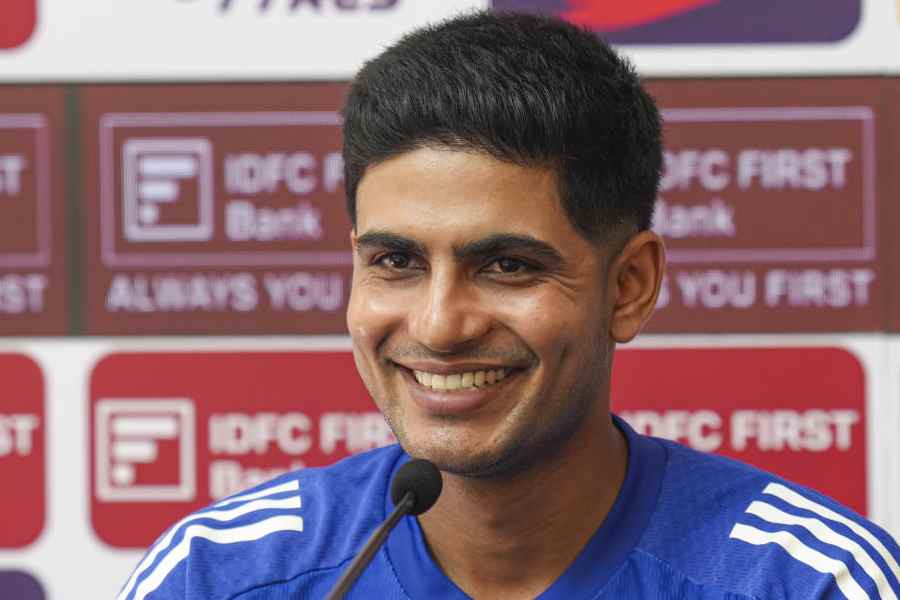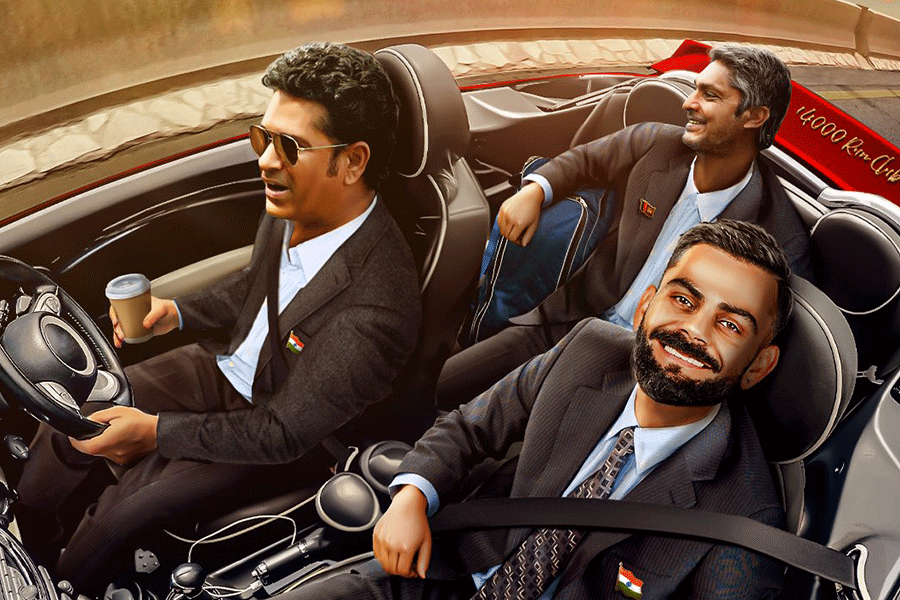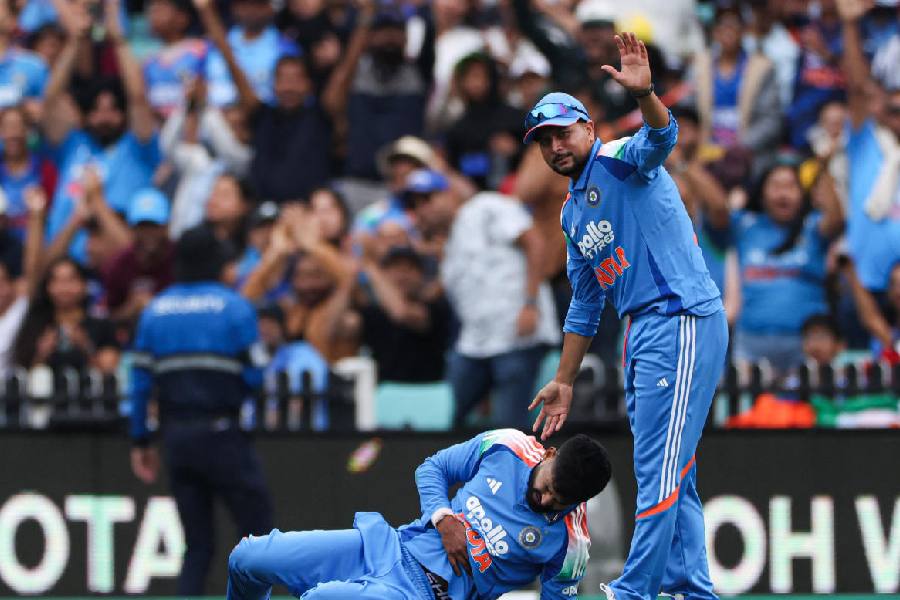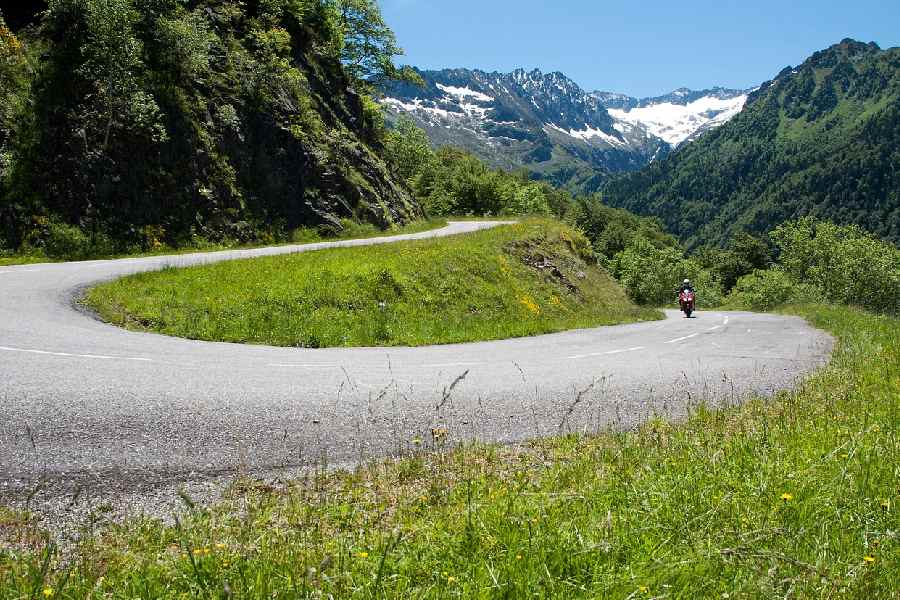
It looked like a city that was readying for a gigantic fight to the finish. But the Fourth Battle of Panipat was about to be fought by one gigantic hulk of a man who could have singlehandedly taken on an entire army — or two.
The Great Khali glared down at passersby from hoardings around Panipat. And, on the day, it seemed that all roads led to the Dussehra Grounds, where multiple rows of policeman guarded the arena from thousands of fans and selfie-hunters who had come to gasp in wonderment as the former World Wrestling Entertainment (WWE) world heavyweight champion took on all-comers. Before the evening was over, the crowd got its money’s worth, especially when Khali wrapped his huge hands around his opponent’s head to execute his signature finishing move, The Great Khali’s Vice Grip.
But don’t be taken in by his fierce prize-fighter persona. Khali’s now back in India to repay his debt to society in the only way he knows how. And maybe it might turn into a profitable business too, but he insists that is secondary.
“I came back to India with a sole ambition of nurturing the budding talent who want to take up pro-wrestling as a serious career choice,” he says in his deep, baritone voice.

For Dalip Singh Rana, 43, popularly known as The Great Khali, this will be a second coming in the ring. He was the first Indian to tag on to the WWE jamboree and battle against the fiercest names in the ring like Kane, Undertaker and The Big Show before deciding to step out of the WWE ring in 2014.
We met at his academy in Kangniwal, 13km from Jalandhar, where he trains around 250 aspirants, including women wrestlers, who are looking to fight their way to the top of the WWE. His office has few decorations but there’s one photograph that’s placed prominently, of M.S. Bhullar, the senior cop who spotted Khali when he was just a security guard and altered his life by offering him a job in the Punjab Police.
Khali’s a man of few words but he is incubating giant-size plans. He launched The Great Khali Returns Series this year that has already seen him in action in Haldwani, Dehradun and Ludhiana. More shows will take place in coming months and the series is also being broadcast live on the ETV Network. It showcases 35 pro-wrestlers from his own Continental Wrestling Entertainment (CWE) training academy in Jalandhar, taking on 14 international pro-wrestlers from the US, Canada, UK, South Africa and Puerto Rico.

Photo: Rupinder Sharma
If that’s not all, he is also bringing out an autobiography that will soon be published by Penguin Random House. He’s also getting his plans into shape and has just launched the first of The Great Khali Gym and Fitness Clubs. He’s also the brand ambassador for Ambuja Cement and makes appearances at brand launches, like one for the Coolpad smartphone recently.
But he hasn’t always been on the celebrity circuit. Far from it. He’s the son of a small farmer from Himachal Pradesh, and the second of eight children. He started out by putting his huge physique to use as a labourer and later loaded sacks onto trucks and even worked in a stone quarry. His luck turned in 1994, when he was spotted by Bhullar, who figured that the gentle 7ft-1in giant might be a useful addition to the police sports teams.
“First, I tried shot-put and won gold at the state police games,” says Khali. Next he took up bodybuilding and clinched the Mr India title in 1998. “One day I happened to see a WWE match and thought I could easily do all of that,” says Khali, whose daily diet consists of 2kg of chicken, a big heap of chapatis and a massive plate of rice, apart from 24 bananas, 2kg of apples, 30 boiled eggs and four litres of milk. That might sound like a lot but remember he works out for around six hours every day.

Once he clinched the Mr India title, Khali was shrewd enough to figure that he could go further in life. He applied for a six-month leave and headed to Hayward, a town near San Francisco in the US, where he began training at the All Pro Wrestling (APW) academy. He entered the ring for the first time under the name of Giant Singh. “I rented a room and worked on my English very hard,” he adds.
Later, he accepted an offer from the New Japan Pro Wrestling and fought there for around three years. In between, he acted in a movie, The Longest Yard, an Adam Sandler comedy that revolved around sports. The big break came when the WWE boss, Vince McMahon made him an irresistible offer in 2005.
The big man’s post-WWE retirement plans were also on a grand scale. His sprawling academy’s spread over five acres and has a gymnasium and a hostel. The students practice in three shifts in a large hall that has two big rings and huge LCD screens on which they can watch their own performances.
.jpg)
“When I visited India in 2007, I bought this land and got the construction work done in 2010. I finally came back to start the academy in 2015.”
Once he stepped out of the ring, Khali turned his focus first on the academy. He has collected many ambitious youngsters who are hoping to strong-arm their way to success. One such is 17-year-old Pranjal Singh Baghel from Rewa, Madhya Pradesh, who saw Khali on TV, quit his studies and packed his bags for Jalandhar.
Then, there’s Super Khalsa, aka Inderpreet Singh, who says the academy’s students get opportunities that wouldn’t come to them elsewhere. “Many students have been offered TV and film roles,” he says.
“It’s good to see students climbing fast,” says Khali. “Three students, Lovepreet Singh, Satinder Singh and Akbar Ali are already being trained at the WWE School in Florida,” says Khali proudly.
In India, Khali lives with his brother while his wife and three-and-a-half year old daughter live in the US. “My wife often says I should move back, but I’m here for a cause and want to see at least 100 students making it big,” he says. He travels to the US frequently and his family’s also here now for a month.
“He’s very hands-on and here at the academy 12 hours every day,” says Surinder Rana, Khali’s younger brother who helps to run the academy. “He’s a very gentle soul and I don’t think I’ve ever seen him in an aggressive mode. Bhai (Khali) still goes back to the village often to meet our parents and siblings,” he adds.
At the academy, his hard work’s quickly bearing fruit. This month, a WWE scouting team flew down to hire budding pro-wrestlers from his CWE academy and shortlisted 10 students, who will soon head off on the journey of their dreams. “Their next stop will be the US to fight big names in the ring,” says Khali.
One promising young lad is the towering, 26-year-old Shanky Singh, who’s an intimidating 7ft tall. Then, there is Sarbjit Kaur and Kavita Devi, the women wrestlers who impressed the scouts with their style. Sarbjit, who’s 30, goes by the ring name of BB Bull Bull and has moved out from her family home and rented a flat near the academy. Kavita, aka Hard KD, lives apart from her husband and even chucked up her government job to chase her dreams. “I’ve rented a room and I live with my sister-in-law who takes care of my newly-born baby,” says Kavita, a four-time national champion in weightlifting and a national champ in Wushu (a Chinese martial art).
WWE’s, of course, not just a test of strength but more about entertainment. The battles which look terrifyingly real are actually stage-managed. “When I set out, I didn’t know these matches aren’t for real and that there are stories behind them to entertain the crowd,” Khali says, animatedly waving his gigantic hands in the air.
Back then, he had a hard time learning the rules of the game. “I didn’t know what it was to be the ‘Heel’, who’s the villain, or the 'Babyface' who plays the hero,” he adds.
Canadian coach Matthew A. Des-rocher, who has come to train the budding young wrestlers, says that pro-wrestling’s is all about entertaining the crowds. “You choose a character (Babyface or Heel) and concentrate on the crowd-work to evoke reactions,” he says.
The students are learning fast and every weekend the academy hosts fight shows and pulls in spectators.

Some matches, like one between Hard KD and BB Bull Bull have gone viral. In the video, BB Bull Bull challenges
the crowd and Kavita, emerges, clad in a salwar-suit. “Here, the challenge is to make everything entertaining,” says Kavita.
The Great Khali Returns series is, of course, planned as a grand spectacle and there will be 10 matches every year. He also aims to take the fights to inter-national audiences.
In Panipat, the crowd got its fill of bruising entertainment. It wasn’t the Fourth Battle of Panipat and it didn’t change the course of Indian history, but it did make for an evening of great entertainment.











